|
I got up early the other day and went back north to Maine to visit family. We hadn't been for a while and the personal landscape has changed a bit. Still, it was nice to be home. We only had so much time for a tour of various households. Some relations--like my mom--had moved since we were there last. Others were right where we left them. It was all good. So much in life can feel unstable these days. Everyone I know, it seems, is in transition. Seeing people who you have known forever reminds you that while the trappings are altered somewhat, you still have a place, even if it is more relational than physical these days. I may not have spent a huge amount of time in some of these spaces...but my people are there. This relational feeling is not unlike the one I get from being outside. There is plenty that doesn't quite fit each time, but, still, one is locked into an extended network where a place for humanity--and for individual humans--still exists. Lately it has been hard to get outdoors. It will be for a while longer. Weather, time, work, and the desire to be with family currently create a number of barriers that are hard to overcome. Oh well...it will happen...eventually. Until then there is preparation and staying in shape. One aspect of preparation involves going through my backpacks and taking a look at all the gear I have for hiking. Some of it needs to be cleaned. There are a couple items I wonder if I really need. There are a few that must be replaced. Whenever I get back out it would be best to have the right stuff. Staying in shape, on the other hand, means getting back to the gym and slowly heading back out into the winter world... 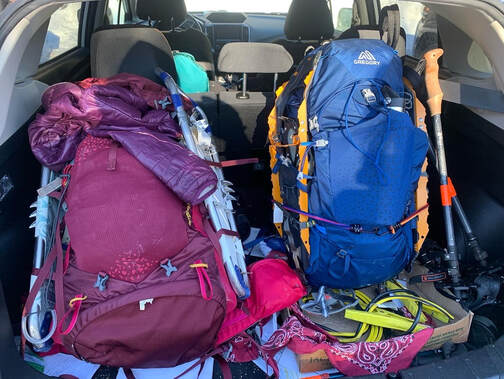 Two Gregory Packs in their full glory on the coldest hike of our year up Mount Liberty. You can see some of the extra straps for carrying snowshoes and other gear. Mine is the blue one. Al's is one size up. Two Gregory Packs in their full glory on the coldest hike of our year up Mount Liberty. You can see some of the extra straps for carrying snowshoes and other gear. Mine is the blue one. Al's is one size up. For the next year-end list I have five pieces of kit that I was super grateful for. Some of this stuff becomes a part of you on a long walk. Some of it may be or feel a bit more of a burden at times. Some of it never does. Anyway, here they are, in no particular order. Backpacks: OK... Maybe there is a bit of an order. You aren't going to get far without a good pack. I actually have four. One--a 40 liter Osprey--is really my travel bag but those straps are super-helpful for pushing through train stations and airports. Another is a 20 liter day pack from LL Bean that folds up super-small. Before my back injury, that was my go to day pack. Post-surgery, everything must have a frame now. I still make use of it. I just take it to the gym. With that out of the way, my current hiking kit includes the remaining two bags. I switch them out seasonally. That said, the seasons aren't even and there are times when I need to carry more stuff than a basic day pack can handle. Usually this means I defer to my "winter"--and most of spring and late fall--pack; the Gregory Zulu 40. A 40 liter pack isn't actually that large. It wouldn't get you much farther than an overnight, but--considering how I hike--this one has fit the bill for a couple years. You need a big pack when it starts to get cold. I found that this year, for example, I had to put my smaller bag away in mid-September. Over the course of our partnership, I have added some after-market straps and usually carry a couple bungee cords. There are always extras, like sandals, wet socks, or snowshoes that need to hang outside. The Gregory has a couple years on it. This year, however, I also got a summer pack for our hike across Scotland. We were staying in B&B's so there was no need for the extra camping capacity. Also--concerned about the longer days and what the weight would do to us--we planned to carry mostly water and one extra layer. For this purpose I used the Osprey Talon 22. At 22 liters it was close to half the capacity of the Gregory. It turned out I could carry quite a bit more than I thought, so I took advantage of the space. There is a partial list of my daily payload in the wrap up--linked in this paragraph--from that trip. However, it is still a slightly lighter frame pack that kept me honest about what to bring. It is best for either when hikes are in fair weather and close to resources or straight up during the summer months. 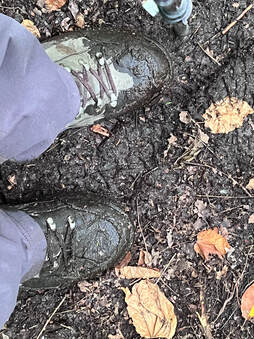 Wet day coming down the Horn...dry feet. Wet day coming down the Horn...dry feet. Boots: OK, this is a simple one. Boots are a personal decision based on the shape and size of individual feet. I used two pairs this year with mixed success. I made a mistake in my selection of boots for the Scotland hike. I thought something with a softer sole would help with the hard roads. It did...but the boot was less breathable which was a problem during Global Warming Summer. I would have been better off with something more durable or more breathable. I will not dwell on that. You can check out the post I linked in the last section. The good news is that my other pair are Lowas. I like them very much, though they did need inserts. They are all leather which somehow made them more breathable. Also, they kept me dry under some hideously damp circumstances. Once your feet are wet there is no happiness. I dread having to replace these boots as they have been downright perfect for my needs. Hopefully they are perfect next time as well. Boots are expensive... 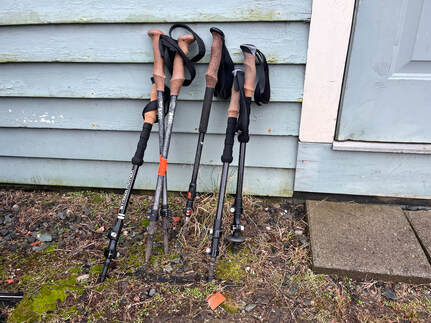 Here is an assortment of poles, mostly from REI or Hiker Hunger. There is a beat up one that journeyed on the AT with a thru-hiker but couldn't be taken on the plane. Note the cork handles--to keep your hands dry--and the basic looking clamps for adjusting height. Here is an assortment of poles, mostly from REI or Hiker Hunger. There is a beat up one that journeyed on the AT with a thru-hiker but couldn't be taken on the plane. Note the cork handles--to keep your hands dry--and the basic looking clamps for adjusting height. Hiking Poles: Here is a piece of equipment that I didn't expect to rely on as much as I did. Boy, do they make a difference! I was using these a bit even before my back injury. Now I rarely take a hike of any consequence without them. My suggestion is to always use two. That will help to balance you out. I use them both for ups and downs. Some do one or the other. Either way, they take pressure from your knees and make your arms work a bit harder. This is all to the good. Most hiking poles work just fine. Do yourself a favor, though and skip thinking about using ski poles. They are not the same! Hiking poles are adjustable and built for taking a ton of weight for a longer time. These days my go-to poles are from Hiker Hunger. I like the carbon fiber. This is partly just because they are a tad lighter, more durable, and take the shock a bit better. I broke a metal pole by landing on it. That also may have biased me. There are slight variations in design to think about if you want to. I prefer cork handles and a simple clamp for adjusting height. There are some which have sleeker looking mechanisms where you twist an invisible squeeze thing. They look sleeker, but the mechanics on the inside are impossible to repair and more likely to break. With most hiking equipment simplicity is a virtue. It should be possible to tighten the clamp at the joints with a phillips head (that you should bring with you if this is the case) or with your fingers (as on the Hiker Hunger models). If you zoom in on the picture above you will see what I am talking about. 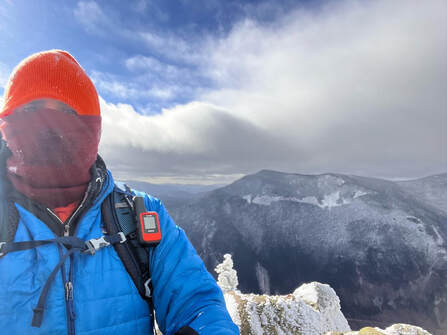 That orange thing that isn't a hat is the Garmin. Bringing that was the wisest thing I did on my solo hike up Jackson and Webster. That orange thing that isn't a hat is the Garmin. Bringing that was the wisest thing I did on my solo hike up Jackson and Webster. Garmin Mini: There isn't a ton to say here. this is a device that connects to a satellite to give you directions and communicate with the outside world. We rarely use it, preferring phone apps like AllTrails and actual physical maps that don't need charging. That said, the Garmin has an SOS function which could be a lifesaver if you get stranded in a spot where your phone doesn't work. Some hikes have few to know dead spots. Others--like those in Baxter State Park--rarely have cell coverage. The Garmin gives us piece of mind that we don't have to use. Al and I have one that we share, because...it is pricey. 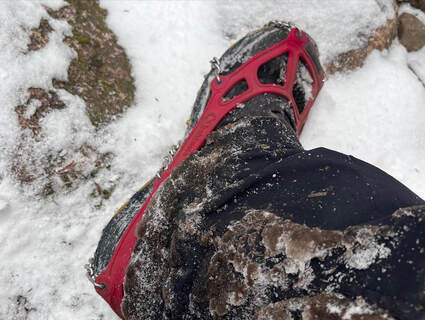 OK...this was pretty wise, too. These are my Kahtoolas on Jackson and Webster. OK...this was pretty wise, too. These are my Kahtoolas on Jackson and Webster. Micro-Spikes: On the hiking socials there are a lot of arguments about which kind to use. Basically, though, they are chains and pointy things with elastic frames that fit over your boots. This time of year they are super-important to have in your bag. We always carry micro-spikes starting in November if we are expecting to climb. For how we hike, they are even more important than snowshoes (also necessary in some situations). Ice can really mess a person up. There are really only two brands that you want to find yourself depending on. They are made either by Kahtoola or by Hillsound. Do NOT try to save money here if you can help it. There are cheaper brands but I, at least, worry about getting stuck somewhere sketchy with nothing more than a pile of broken elastics. For winter hiking one might also want crampons (big spikes) or an ice-ax. Al and I use micro-spikes and just assume we aren't doing hikes that require more than that. We do like to know our limits! Maybe someday we will trade up. That Jackson hike was an eye-opener. It was the first time I missed having an ax. I have also found micro-spikes helpful on shorter trips where there is little ice but quite a bit of packed down snow. That extra traction keeps one from slipping back and wasting energy. Well that is all for now! Obviously there is a lot of other gear one could bring up here. these are just my favorites. Honorable mentions can be given to my trekking towel, the oft-used water purification tablets, snacks, and snowshoes. Maybe I will get to those later, but these are the big ones or 2022...
0 Comments
Leave a Reply. |
Adam Tierney-EliotI am a full-time pastor in a small, progressive church in Massachusetts. This blog is about the non-church things I do to find spiritual sustenance. Archives
June 2024
Categories
All
|
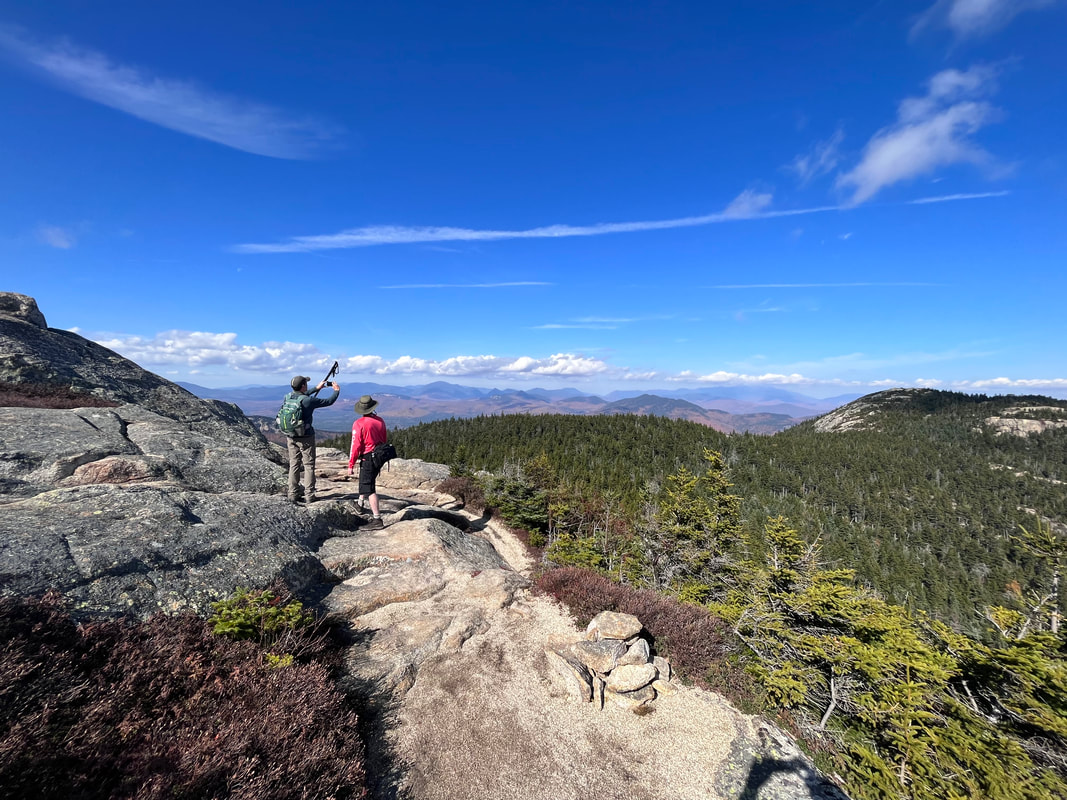
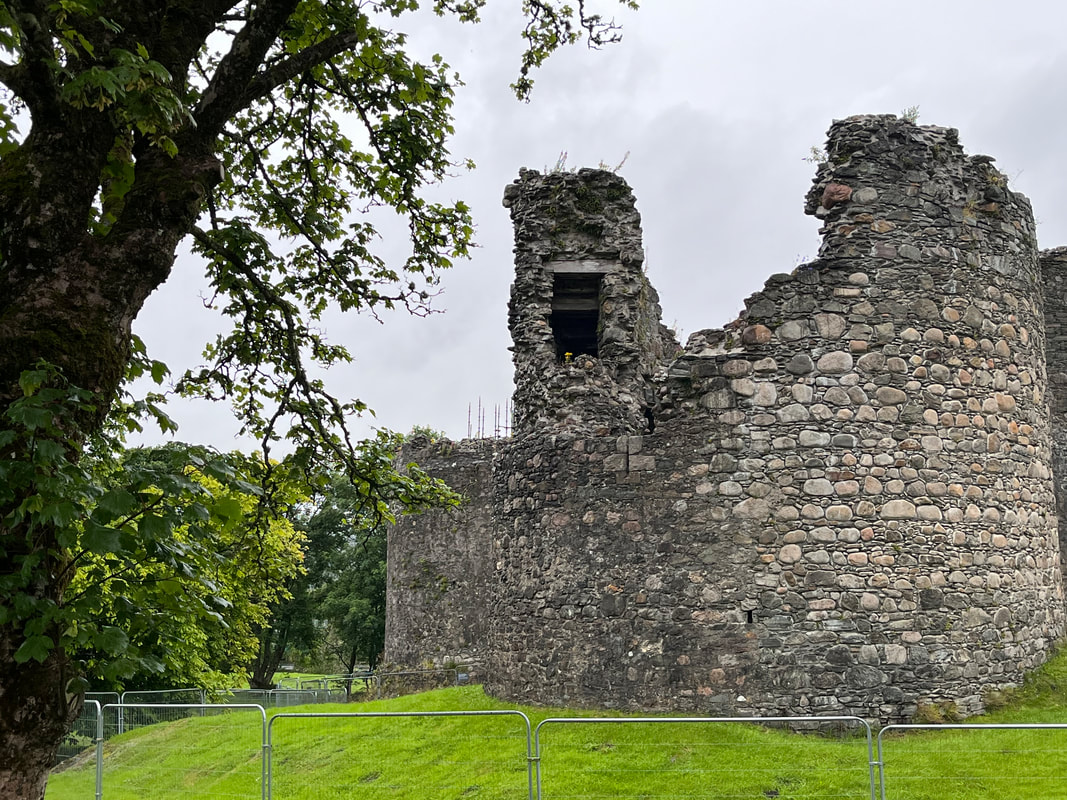
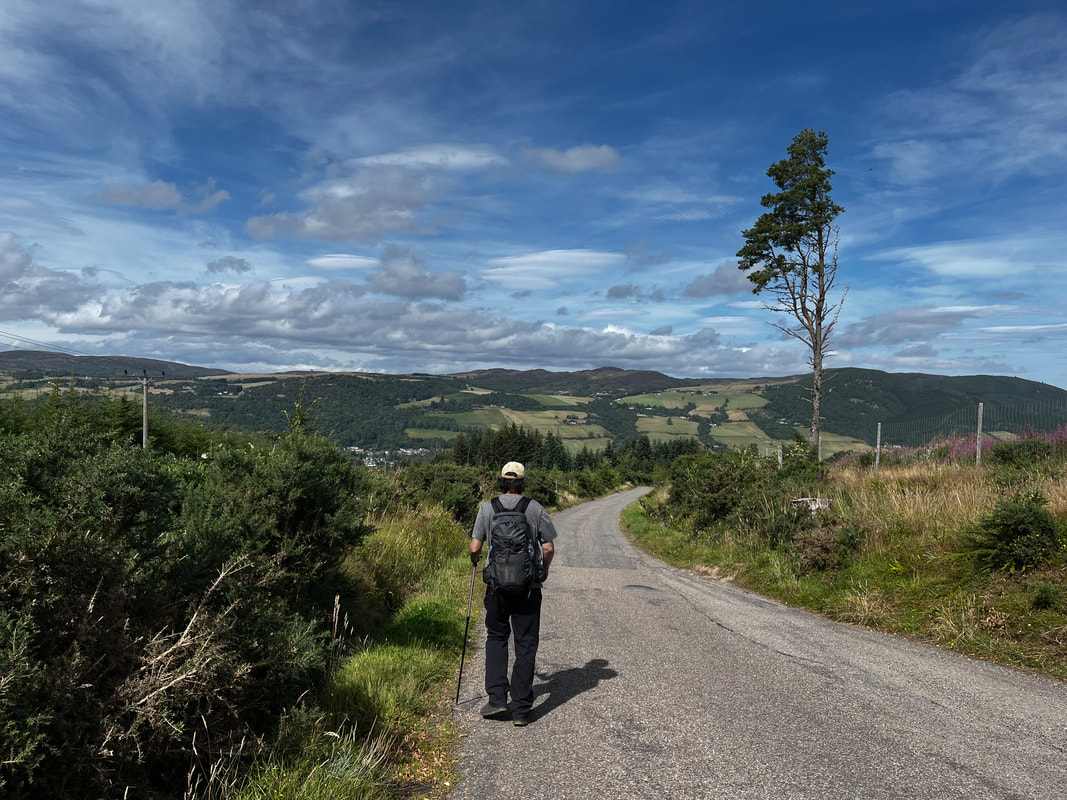
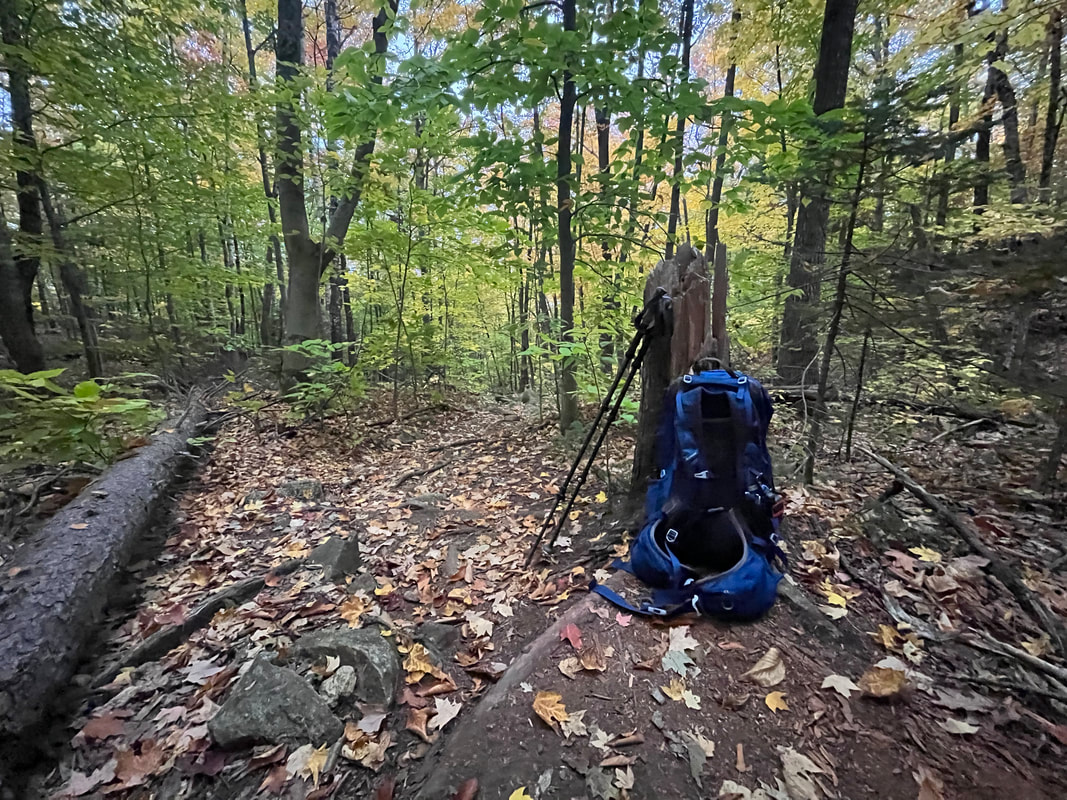
 RSS Feed
RSS Feed